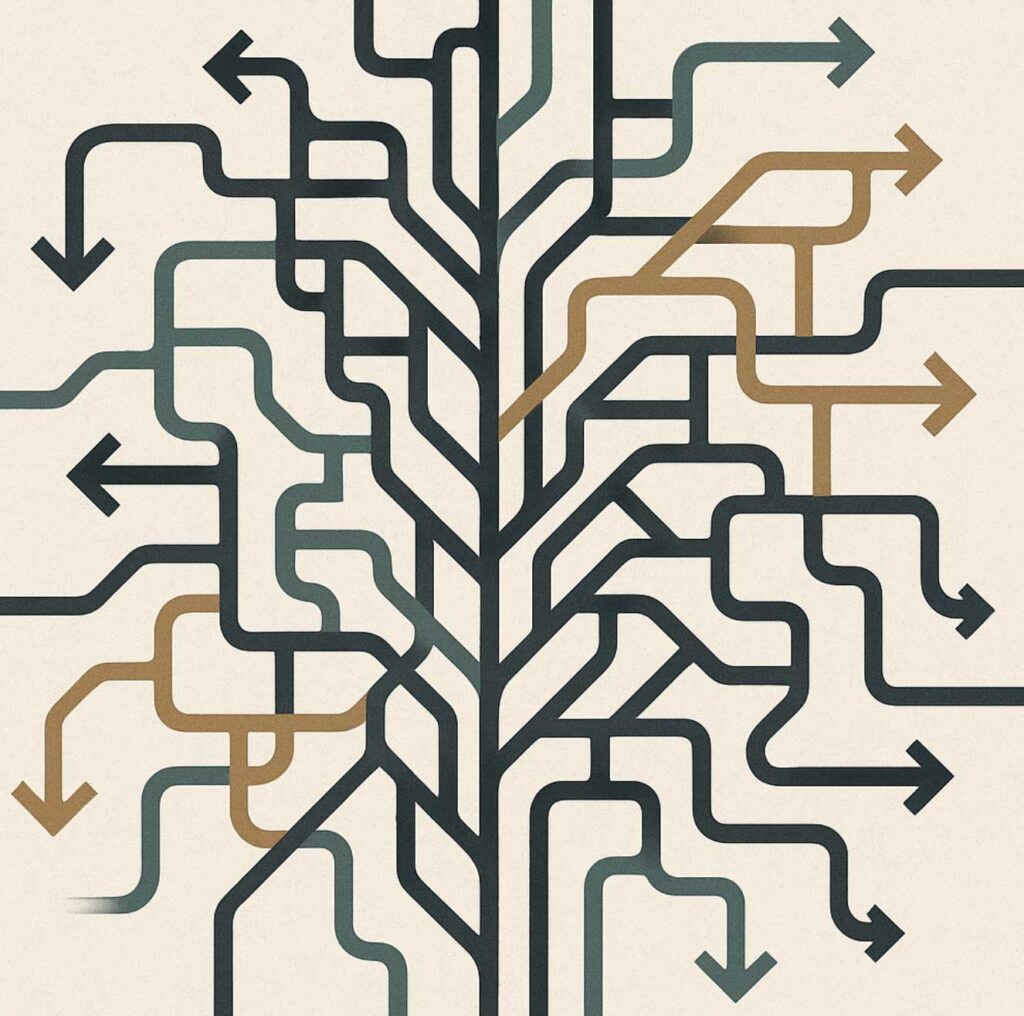The numbers tell a sobering story. Only 27% of B2B purchases result in high-quality, low-regret decisions. Meanwhile, 80% of buyers initiate first contact when they’re already 70% through their purchasing process, having wrestled with decision paralysis in isolation. The culprit isn’t lack of information—it’s the absence of structured support when teams need it most.
We’re witnessing the death of the traditional sales model, but what’s emerging in its place isn’t just a shift in methodology. It’s a fundamental reimagining of how organizations make complex decisions. The companies that thrive in this new landscape won’t be those with the best products or the slickest presentations. They’ll be the ones that master the art of decision scaffolding—creating the structural support that transforms overwhelmed buying committees into confident decision-makers.
The Confidence Crisis in Complex Decisions
Brent Adamson’s work on Framemaking reveals a critical insight: the primary barrier to organizational buying isn’t skepticism about vendors—it’s customers’ lack of confidence in their own ability to make the right decision. This confidence deficit manifests in several ways:
The Paralysis of Choice: Teams facing complex decisions often become trapped in analysis loops, gathering more information instead of moving toward resolution. Half of major purchases are delayed by “surprise steps” that buying teams were unaware of. These aren’t sophisticated procurement hurdles—they’re basic organizational processes that teams encounter because they lack experience navigating large-scale decisions.
The Consensus Conundrum: Modern buying decisions involve an average of 28 stakeholders, up from 20 just two years ago. Each additional voice doesn’t just add complexity; it exponentially increases the potential for misalignment. Consensus—not vendor selection—is the primary hurdle.
The Information Overwhelm: Buyers now consume an average of seven pieces of content throughout their purchase journey. Rather than increasing confidence, this information glut often has the opposite effect. Without a framework to process and prioritize inputs, teams become more uncertain, not less.
The Role of the Decision Coach: Seller or Agnostic Third Party?
The question isn’t whether organizations need decision coaching—they do. The question is who should provide it, and when.
The Case for Seller-Led Decision Coaching
The Challenger Sale methodology demonstrated that the most effective salespeople aren’t simply relationship builders or problem solvers—they’re teachers who help customers think differently about their challenges. The next evolution is the decision coach: a seller who helps customers navigate their own internal processes with the same rigor they apply to understanding the external solution.
Advantages include:
- Solution Expertise: Sellers who’ve guided many organizations recognize patterns internal teams lack. They’ve seen where organizations typically get stuck.
- Stakeholder Orchestration: They know how to navigate complex dynamics and facilitate tough conversations.
- Process Acceleration: Seller-coaches provide frameworks that compress timelines and reduce friction.
The Case for Agnostic Decision Support
Academic research on team dynamics and informal leadership suggests that external, neutral facilitation may be more effective in certain contexts. When task uncertainty is high, informal leadership hierarchies can either enable coordination or generate conflict.
Advantages include:
- Neutrality Advantage: Teams surface authentic concerns with a neutral facilitator.
- Process Focus: Agnostic coaches concentrate on decision quality and alignment—not a particular solution.
- Cross-Functional Know-How: These coaches have experience across industries, offering frameworks that transcend product categories.
What Companies Should Focus on Internally
While external decision coaching is valuable, organizations cannot outsource the fundamentals.
Structured Problem Definition
Academic research consistently shows that teams perform better with shared task clarity. Yet most organizations rush toward solutions without adequately defining the problem. Frameworks like SCQA (Situation, Complication, Question, Answer) help teams gain clarity and consistency.
- Situation Assessment: Agree on where you are and how you got here.
- Complication Identification: Define the specific challenges or constraints.
- Question Formulation: Craft a question that is specific and actionable.
Decision Rights and Process Clarity
Effective teams have:
- Clear Decision Authority: Who can decide? The RACI framework (Responsible, Accountable, Consulted, Informed) is a good starting point, but must be tailored.
- Information Integration: Shared processes for collecting and evaluating information.
- Consensus Building: Mechanisms to hear all voices and confirm broad support—even if not unanimous.
Scaffolding for Informal Teams
Organizations also need scaffolding approaches for teams that form organically.
- Role Emergence Support: Provide frameworks that let leaders emerge based on expertise.
- Communication Protocols: Guidelines for information sharing and decision documentation help sustain momentum.
- Resource Access: Easy self-service access to data, stakeholder input, and tools.
Where to Seek External Support
While internal skills are foundational, external coaches are essential for:
- High-Stakes, Infrequent Decisions: Major technology decisions, market expansions, or strategic choices justify bringing in outside expertise. The cost of guessing is simply too high.
- Cross-Functional Complexity: When decisions span many units, neutrality and experience with facilitating priorities matter.
- Time-Sensitive Situations: Proven facilitators compress timelines by applying methods and wrangling stakeholders.
A Framework for Decision Scaffolding
Pre-Decision
- Define the problem with structure (like SCQA)
- Map stakeholders and their interests
- Design clear timelines, checkpoints, and communication rhythms
Decision Phase
- Collect data systematically
- Generate a comprehensive set of alternatives
- Establish and apply clear evaluation criteria
Post-Decision
- Transition momentum to execution planning
- Share decision rationale transparently
- Capture lessons for continual improvement
Organizations that master decision scaffolding—internally or with external partners—make better choices, faster, with higher alignment and more sustainable results. Decision quality correlates with business performance. The companies that invest in clear structure, rigorous process, and decision coaching will outpace those that default to reactivity.Michael Nagorski is the Founding Partner of Double Loop Performance (www.doubleloopperformance.com), a boutique consultancy specializing in workshop facilitation and revenue growth interventions. He can be reached via LinkedIn for more information.

